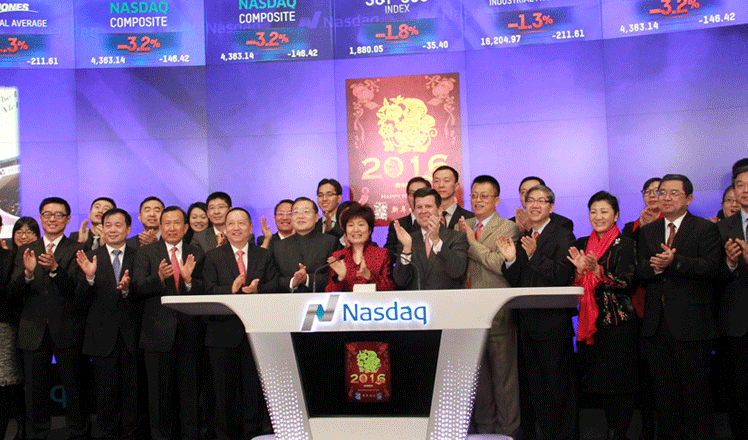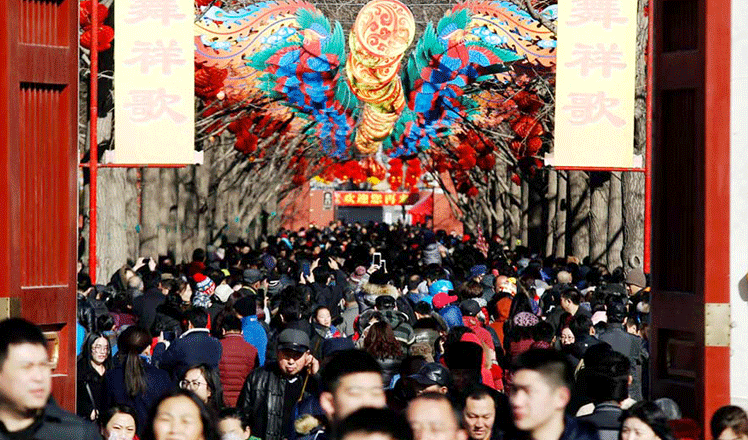Why spending - not saving - will help make China greener
Updated: 2016-02-10 14:16
By Chris Davis(China Daily USA)
|
||||||||
It makes sense to worry that weaning China off of king coal will lead to an economic slowdown.
But a new stud - co-written by an MIT professor and scholars at the Institute of Energy, Environment, and Economy, at Tsinghua University in Beijing - shows that China's newly announced plans to cap and trade carbon can reduce carbon dioxide (CO2) emissions signifi cantly without hobbling economic growth at all.
The researchers created a unique model that ties together China's energy system and its economy and found that China's coal use - a major source of global CO2 emissions - should peak around 2020, while the nation's overall CO2 emissions would peak around 2030, or maybe even sooner.
Still, the drop in carbonfueled economic activity would not keep China from reaching its goal of becoming a "well-off society" by 2050, they write.
"Using carbon pricing in combination with energy price reforms and renewable energy support, China could reach signifi cant levels of emissions reduction without undermining economic growth," writes Valerie Karplus, an assistant professor at the MIT Sloan School of Management and a co-author of the new paper titled Carbon emissions in China? How far can new efforts bend the curve? in the journal Energy Economics.
The other co-authors are Xiliang Zhang, Tianyu Qi, Da Zhang and Jiankun He, all at Tsinghua University.
The study was spurred by headline-making policy changes recently announced by China, including the toughest- ever regulations on local environmental pollution and the creation of markets for CO2 emissions, other pollutants and scarce resources like water.
That suite of measures led to the agreement with the US unveiled in November 2014 where China committed to a goal of making non-fossil fuel sources account for 20 percent of its energy use by 2030. (By 2015, that fi gure was at 11 percent). For its part, the US promised to lower its CO2 emissions by 26-28 percent against 2005 levels by 2025.
And that bilateral agreement, in turn, has been credited with laying the foundation for the grander set of global carbonreduction pledges inked at the UN Climate Change Conference in Paris in December.
The study uses a model of China's economy and energy output, called C-GEM and was developed by scholars at the Tsinghua-MIT China Energy and Climate Project.
The model lays out two main paths that China's energy consumption could take: One, the "Continued Eff ort" scenario, is a business-as-usual trajectory. The other course, following the reforms and initiatives China has announced, is called the "Accelerated Eff ort".
In the "Continued Eff ort" scenario, China's carbon emissions would not level off until around 2040, 10 years later than in the "Accelerated Effort" scenario, and at a level 20 percent higher.
In the model, coal's use as a primary source of energy would drop sharply from around 70 percent in 2010 to around 28 percent in 2050.
"Coal today is used with varying degrees of effi ciency across the Chinese energy system," Karplus writes. ��The model is capturing the fact that you have a lot of low-cost opportunities to reduce coal, from heavyindustry direct use as well as the electric power sector."

In both simulations, China's famously high personal savings rate declines, as it has in many developing economies. As a result, more and more of China's GDP will come from consumer-driven spending, not state-led investment, which itself will drive reductions in carbon emissions per unit of GDP.
"The consumption share of GDP has a very diff erent carbon intensity, as a bundle of goods, relative to investment goods, so you automatically get a reduction in carbon intensity from that trajectory," Karplus writes.
Put simply: At the moment, household earnings in China are tucked away in banks, where they get loaned out to fund massive infrastructure projects - highways, dams, power plants - that pump out huge amounts of CO2. In the future, if China's households save less, they will be spending more on services and everyday goods, which leave a smaller carbon footprint.
The study has gotten the nod from the energy policy world. John P. Weyant, a professor and deputy director of the Precourt Institute for Energy Effi ciency at Stanford University, called it "state of the art" and a "realistic representation of the pathways by which the Chinese and world economy can be expected to adjust to policy initiatives."
One more argument for China to push aggressively ahead on the environment.
Contact the writer at chrisdavis@chinadailyusa.com.
(China Daily USA 02/10/2016 page2)
- General strike against pension reform brings Greece to standstill
- Madrid airport sounds alarm after bomb threat on Saudi plane
- Obama proposes new oil tax to fund clean transportation
- UN special envoy announces temporary pause of intra-Syrian talks
- Taliban kill 10-year-old hailed as militia hero
- Obama slams anti-Muslim rhetoric during first visit to US mosque

 Opening bell on Chinese New Year's Day
Opening bell on Chinese New Year's Day
 The world celebrates Spring Festival with China
The world celebrates Spring Festival with China
 Ditan Park temple fair embraces Chinese New Year
Ditan Park temple fair embraces Chinese New Year
 Xi Jinping grieves over Taiwan quake, vows aid
Xi Jinping grieves over Taiwan quake, vows aid
 Flash mob in monkey costumes appears in NYC to mark Chinese New Year
Flash mob in monkey costumes appears in NYC to mark Chinese New Year
 China's icebreaker 'Snow Dragon' reaches Ross Sea in Antarctica
China's icebreaker 'Snow Dragon' reaches Ross Sea in Antarctica
 Practice makes perfect for flag party on eve of Year of the Monkey
Practice makes perfect for flag party on eve of Year of the Monkey
 Spring Festival Eve dinners around China
Spring Festival Eve dinners around China
Most Viewed
Editor's Picks

|

|

|

|

|

|
Today's Top News
National Art Museum showing 400 puppets in new exhibition
Finest Chinese porcelains expected to fetch over $28 million
Monkey portraits by Chinese ink painting masters
Beijing's movie fans in for new experience
Obama to deliver final State of the Union speech
Shooting rampage at US social services agency leaves 14 dead
Chinese bargain hunters are changing the retail game
Chinese president arrives in Turkey for G20 summit
US Weekly

|

|